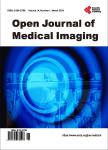Computed Tomographic Angiography as the First Diagnostic Tool in the Evaluation of Patients with Acute Limb Ischaemia: A Narrative Review
Computed Tomographic Angiography as the First Diagnostic Tool in the Evaluation of Patients with Acute Limb Ischaemia: A Narrative Review作者机构:Manchester University NHS Foundation Trust Manchester UK Barking Havering and Redbridge NHS University Trust London UK
出 版 物:《Open Journal of Medical Imaging》 (医学影像期刊(英文))
年 卷 期:2022年第12卷第4期
页 面:195-207页
学科分类:1002[医学-临床医学] 100214[医学-肿瘤学] 10[医学]
主 题:Acute Limb Ischaemia Computed Tomography
摘 要:The rising number of patients with acute limb ischemia (ALI) brings the question if there is an opportunity to make a diagnosis safely and accurately. The current “gold standard for diagnosis is digital subtraction angiography (DSA). However, current times show that computed tomography angiogram (CTA) builds popularity among doctors working in vascular surgery departments. The aim of this study is to collect evidence of the use of CTA for the assessment of patients with ALI and compare it to the “gold standard (DSA). Methodology: This is a narrative synthesis, the search of 4 databases is done for relevant articles within a period from 2000 to 2021. Information extracted will be compared to leading guidelines for ALI published in 2 recent reviews by the American College of Radiology and the European Society for Vascular Surgery. Results: In total 48 articles were obtained: reviews (n = 13), studies (n = 4) and case reports (n = 31). Case reports were excluded from the study. CTA has multiple benefits, which can be put into 4 different groups: availability and accessibility, accuracy, affordability and additional information. Further disadvantages and similarities were discussed in 2 separate groups. Conclusion: The use of CTA in patients with ALI has a notable advantage in all 4 categories (availability, accuracy, affordability, and additional information). Disadvantages and similarities between CTA and DSA, do not vary and do not significantly affect the end decision. This makes CTA a valid tool as the first step in the assessment of the patient with ALI.



